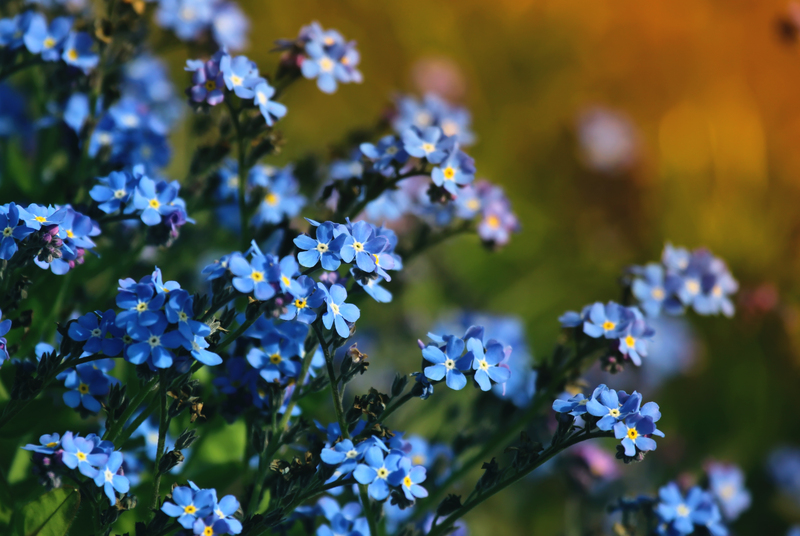Home Shear Sharpening Tips
Posted on 29/09/2024
Keeping your shears sharp is essential for ensuring clean cuts and maintaining the overall health of your plants, fabrics, or hair. Sharpening your shears at home can be both economical and convenient, allowing you to extend the lifespan of your tools and enhance their performance. This comprehensive guide will offer homemade shear sharpening tips, enabling you to achieve professional-level sharpness with minimal effort.
Why is Shear Sharpness Important?
When your shears are dull, you might experience several issues, including:
- Efficiency: Dull blades require more force, making your tasks more strenuous.
- Precision: Sharp shears offer clean cuts, crucial for both aesthetics and function.
- Damage Prevention: Dull shears can crush plant stems, fray fabrics, or cause split ends in hair.

Essential Tools for Sharpening Shears
Before diving into the sharpening process, gather these essential tools:
- Sharpening Stone (Whetstone)
- Diamond File
- Sandpaper
- Scissors Sharpening Tool
- Lubricating Oil
- Soft Cloth
Each of these tools serves a specific purpose and ensures that your shears are sharpened to their maximum potential.
Step-by-Step Shear Sharpening Guide
Using a Sharpening Stone
The sharpening stone, or whetstone, is a traditional and highly effective method for sharpening shears. Follow these steps:
- Preparation: Soak the whetstone in water for 10-15 minutes.
- Disassemble the Shears: If possible, take apart the shear blades for easier access.
- Sharpening: Hold the blade at a 30-45? angle against the stone. Move it back and forth, covering the entire blade. Aim for consistent pressure and stroke count on each side.
- Finishing: Reassemble the shears, apply lubricating oil, and wipe clean with a soft cloth.
Using a Diamond File
A diamond file is ideal for precision sharpening and working on smaller regions of the blade:
- Secure the Shears: Lock the shears in an open position.
- Sharpening: File along the blade's beveled edge. Move the file in one direction rather than back and forth, maintaining a consistent angle.
- Testing: Once sharpened, test the shears on a piece of paper or fabric to ensure they cut cleanly.
Using Sandpaper
Sandpaper is a suitable and accessible option for minor touch-ups:
- Choose the Right Grit: Use coarse grit (~200) for dull edges and finer grit (~600) for finishing.
- Cutting Motion: Make several cuts into the sandpaper, focusing on the blade edges.
- Assessment: Check the sharpness and repeat if necessary.
Using a Scissors Sharpening Tool
Scissors sharpening tools are specially designed for ease of use:
- Inserting Blades: Place the shear blades into the dedicated slots of the tool.
- Pulling Motion: Pull the blades through the slots according to the tool's instructions.
- Final Touches: Test the sharpness and use lubricating oil if needed.
Safety Considerations
While sharpening your shears at home is relatively straightforward, it is essential to follow safety precautions to avoid injuries:
- Proper Handling: Always handle blades with care and keep your fingers away from the cutting edge.
- Secure Positioning: Ensure the shears and sharpening tools are securely positioned to avoid slipping.
- Protective Gear: Wear protective gloves and eyewear, especially when using power sharpeners or files.

Maintenance Tips for Long-lasting Sharpness
To extend the lifespan of your shears and maintain their sharpness:
- Regular Cleaning: Clean the blades after each use to prevent residue buildup.
- Proper Storage: Store shears in a dry place to avoid moisture damage and rusting.
- Periodic Lubrication: Apply a few drops of lubricating oil to the pivot area to facilitate smooth operation.
Conclusion
By following these home shear sharpening tips, you can ensure that your shears remain in prime condition, providing clean and precise cuts every time. Regular maintenance, coupled with proper sharpening techniques, will not only enhance the performance of your shears but also prolong their usability. Whether you choose a sharpening stone, diamond file, sandpaper, or a specialized sharpening tool, the key is consistent care and attention to detail.
Keep these tips in mind, and you'll find that sharpening your shears at home can be straightforward, satisfying, and exceptionally rewarding.






